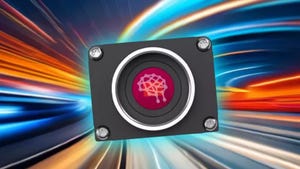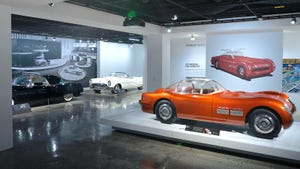May 14, 2010

Dramatic reductions in voltage and power requireA-ments are makingtiny piezo motors and drive systems an interesting option for portable, low-powermedical devices. By eliminating the need for the high voltage normallyassociated with piezo systems, a new piezo motor design from New ScaleTechnologies enables miniature motion systems that operate on a single 3-Vbattery without using voltage boost circuits.
"Normally piezo technology requires input of 40volts or more, which is a concern especially in medical applications," saysRalph Weber, product manager for New Scale. Even though their previous systemsand ASIC could run on a 3.3-V input, Weber says that the boost circuits toproduce the higher input voltage required by all piezoelectric motors can scaredesigners.
"This is a breakthrough because usingmulti-layer ceramic technology, the system doesn't need 40 volts to operate,"he says. "There is no aspect of the system which is high voltage anymore, andour approach also enables the drive chip and control circuitry to be reduced tovery small sizes."
Piezoelectric micro motors are small enough foruse in porA-table, handheld and implantable medical devices. The technologyallows engineers to add motion where traditional electromagnetic motors wouldbe impractical due to size and power limitations. Applications includepositioning devices that can be adjusted afA-ter being implanted and roboticsurgical tools. Special non-magA-netic versions can also be designed to operatenear MRI equipA-ment without affecting image quality or motor performance.
Piezoelectric materials produce a stress orstrain when electriA-cally excited, yielding a few micrometers of motion withvery low force. Piezoelectric motor designs harness ultrasonic vibraA-tions ofthese actuators with a mechanical coupling to produce many millimeters oftravel and high force, while retaining the benefit of sub-micrometerresolution.
Weber says the smallest commercially availablepiezo motor is New Scale's SQUIGGLE micro motor, a linear motor measurA-ing lessthan 2.8 x 2.8 x 6 mm. Using a patented design, four piezoelectric plates arebonded to the sides of a rectangular tube which is threaded on the inside. Atwo-phase drive voltage applied to the plates causes the nut to vibrate in anorbital motion at its resonant (ultrasonic) frequency. Friction engages thethreaded screw and drives it forward. Reversing the phase reverses the screwdirection. The micro motor produces a smooth linear motion with no gears.Weighing only 0.16 gm, it can produce up to 50 gm of force, a variable speed ofup to several millimeters per second and a position resolution of 0.5micrometer.
Like most piezo motors, Weber says the first SQUIGGLE motorsemployed "hard" PZT ceramic plates to minimize dielectric losses and associatedtemperature rise. Unfortunately this material requires an applied voltage ofaround 40V, requiring boost circuits in battery-powered applications. Abreakthrough in PZT ceramic production has reduced this voltage requirement to2.8V, making these tiny piezo motors even more appealing to designers ofportable and handheld medical devices.
To achieve this breakthrough, New Scale collaborated withTDK-EPC on an advanced multi-layer piezo ceramic plate. The patent-pendingplate is a co-fired assembly conA-sisting of many thin layers of hard piezoceramic, and each layer is less than 15 micrometers thick.
The new plate design has enabled the introduction of a new, reduced-voltageSQUIGGLE RV micro motor, which operates directly from a battery at less than2.8V without boost circuits. Weber says this milestone is significant becauseit is the first piezoelectric motor to match the voltage requirements of tradiA-tionalelectromagnetic voice coil, dc and stepper motors. It reA-moves the perceptionof risk associated with higher-voltage boost circuits and interconnections, andalso enables radically smaller drive electronics by eliminating the need forboost circuits in the drive ASIC, as well as external inductors, capacitors anddiodes.
Additional power-saving technology designed into the new driveASIC for the SQUIGGLE RV produces the ultrasonic voltage signals that drive themotor. The NSD-2101 drive IC was developed in conjunction with New Scale'spartner, austriamicrosystems. It incorporates patent-pending smart drivetechnology that monitors motor performance and adjusts the ultrasonic drivefrequency to lock on to the mechanical resoA-nant frequency of the motor.
Because of the motor's self-locking design, no power is needed tohold the motor position. A practical application is for periodic adjustment ofan implanted device because the motor can be powered on to make the adjustmentand then switched off entirely, drawing no battery power until the nextadjustment is needed.
The voltage reduction and the correspondingshrinking of the drive electronics enable a new class of integrated micromotion modules. The M3 (Micro-Mechatronic Module) design platform combines aSQUIGGLE RV motor, a position sensor, the drive ASIC and a microprocessor in aminiature, closed-loop motion assembly.
A TRACKER position sensor provides closed-loopfeedback with resolution of 0.5 micrometers and repeatability of 2 micrometers.The onboard microprocessor provides PID control in the module. Input to themodule can be configured for I2C, SPI or USART, and simple, serialcommunications from a PC or master microprocessor can command this miniaA-tureadvanced motion control system.
The mechanical assembly and housing arecustomized to OEM specifications. The reference design contains all componentsand control electronics in a compact 12- x 30- x 8-mm package, with an actuatorarm that travels up to 6 mm to push an external load.
Another reference design incorporates theseadvanced M3 platform controls into a miniature lens module, creating preciseautofocus capabilities in a package only slightly larger than the lens holderfor board-mounted camera systems.
Using this platform, modules can be developedfor nearly any configuration or application. They can also be sealed for use inhigh-moisture applications or implantable devices.
About the Author(s)
You May Also Like





